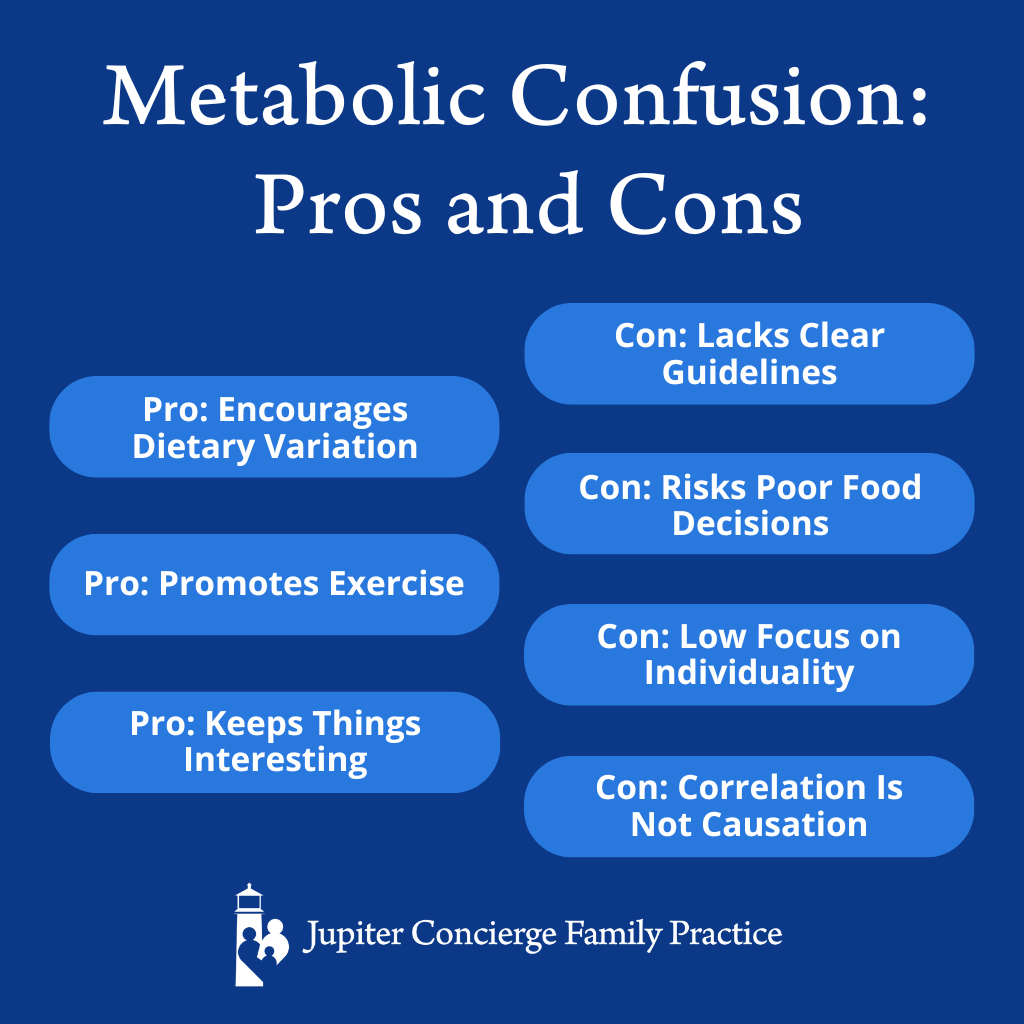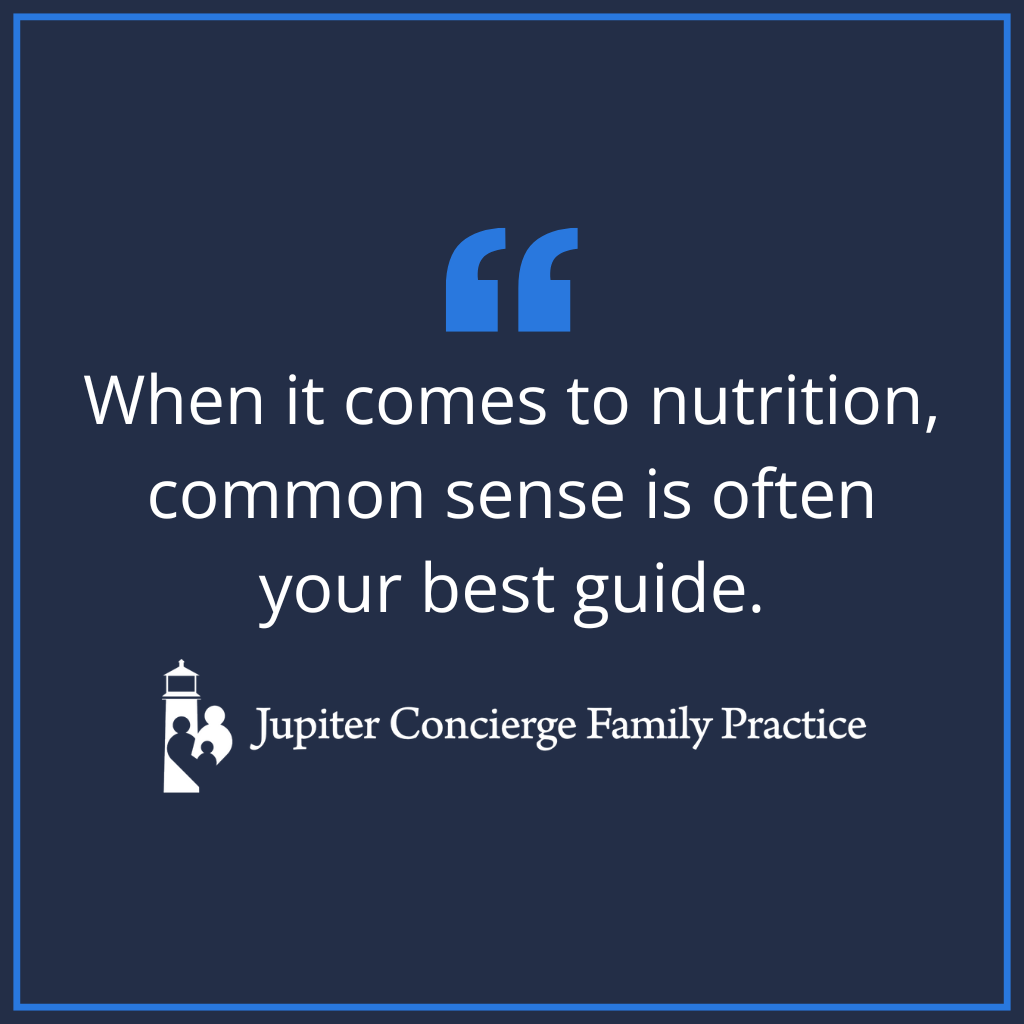
Metabolic confusion has drawn a lot of attention and excitement in the diet and wellness world of late.
Though the term “metabolic confusion” sounds complex, the underlying concept is actually quite simple: By varying both your calorie intake and macronutrient ratios, you supposedly boost your metabolism, burn more fat, and keep your body guessing.
The question, of course, is whether the theory holds up in practice. Let’s explore what metabolic confusion as a dietary strategy entails, where it makes sense, and where it falls short.
What Is Metabolic Confusion?
In practice, metabolic confusion is varying the calories and macronutrients you consume from day to day. For example, on Tuesday, you might eat a low-calorie diet of 1,200 to 1,400 calories. Then, on Wednesday, you might bump that up to 2,000 or even 2,400 calories. Similarly, the relative amounts of fats, proteins, and carbohydrates you eat shift from day to day or week to week.
The theory is that this variation prevents your metabolism from adapting to a specific caloric or macronutrient intake, keeping it more “active.” Proponents claim this boosts your basal metabolic rate (the amount of energy your body burns at rest) and promotes fat burning.
While the concept sounds intriguing, it’s important to note that very little scientific literature supports these claims. That doesn’t necessarily mean metabolic confusion offers nothing of value, but it does mean we need to approach the concept with a critical eye.
Metabolic Confusion: Pros and Cons
To examine metabolic confusion with a critical eye, I’ll walk through both the merits and failings I see in this dietary approach from my perspective as a physician.
Pro: Encourages Dietary Variation
Before globalization made it possible to eat oranges in winter and watermelon in fall, people ate what was in season. This meant a natural and necessary variation in diet that we no longer experience today. Metabolic confusion taps into this idea, encouraging us to eat different foods at different times.
Encouraging dietary variety is one element of metabolic confusion I can wholeheartedly support. When you eat a variety of foods — especially fruits and vegetables — you get a broader spectrum of micronutrients, vitamins, and minerals, supporting your body by covering all its nutritional bases.
Pro: Promotes Exercise
Most metabolic confusion plans encourage exercise, which is a win in any diet. Exercise builds muscle mass, which increases your basal metabolic rate. In other words, the more muscle you have, the more calories your body burns at rest.
Pro: Keeps Things Interesting
One of the biggest challenges with any diet is sticking to it. Monotony often leads to boredom or frustration, which in turn leads to giving up. By varying your food intake and introducing different types of meals, you’re less likely to feel deprived. A diet that keeps things interesting is one most people are more likely to follow.
Con: Lacks Clear Guidelines
Metabolic confusion diets have no strict rules. Should you vary calories daily or weekly? How much should you vary your macronutrients? There are no definitive answers. This lack of structure can make the diet difficult for people to implement effectively.
Con: Risks Poor Food Decisions
Just because a diet allows for high-calorie days doesn’t mean those calories should come from pastries and ice cream. With the focus squarely on calorie intake and variation, however, metabolic confusion doesn’t emphasize how important the source of your calories and macronutrients is.
Unfortunately, without clear guidelines, people might interpret metabolic confusion as a green light to eat junk on high-calorie days and compensate by eating fruits and vegetables on others. That’s not a recipe for good nutrition.
Con: Low Focus on Individuality
Everyone’s individual metabolic makeup and daily needs are unique, so what works for one person might not work for another. Eating a high-calorie diet one day and a low one the next, simply for the sake of change, might not take into account your body’s actual needs. For instance, if you don’t get enough calories to support your body on certain days, you might feel sluggish or unwell.
Con: Correlation Is Not Causation
Proponents of metabolic confusion diets might be drawing conclusions about metabolism and fat burning that simply aren’t justified. The idea that confusing your metabolism increases basal metabolic rate and fat burning is the foundation of these diets, but what if there’s a different cause?
As mentioned, metabolic confusion diets include muscle-building exercises. More muscle means an increased basal metabolic rate. Consequently, we can’t definitively say it’s metabolic confusion that provides health benefits.
Approach Nutrition With Common Sense
When it comes to nutrition, common sense is often your best guide. Instead of focusing on calorie counts, I recommend prioritizing variety, exercise, and mindful eating. Here’s why:
- Variety Is Key: Include a wide range of colorful fruits and vegetables in your diet. Each color represents different nutrients that your body needs to function optimally.
- Exercise Matters: Regular physical activity — whether it’s strength training, cardio, or a combination of both — is essential for maintaining muscle mass and overall health, especially as you age.
- Mindful Works Best: Take time to enjoy your meals in a relaxed or pleasantly social setting. Eating slowly and in a tranquil state allows your body to properly digest and absorb nutrients.
Metabolic Confusion: The Bottom Line
While metabolic confusion might work for some people, its benefits likely come from the lifestyle changes that accompany it — particularly exercise and increased dietary variety — rather than from “confusing” your metabolism.
Instead of getting swept up in the latest dietary trends, remember to focus on the basics: eating a variety of nutritious foods, maintaining regular exercise, and listening to your body’s needs. These fundamental principles aren’t only supported by extensive research but have also stood the test of time.
Sometimes, the simplest approach is the most effective!

Dr. David Rosenberg
Dr. Rosenberg is a board-certified Family Physician. He received his medical degree from the University of Miami in 1988 and completed his residency in Family Medicine at The Washington Hospital in Washington, Pennsylvania in 1991. After practicing Emergency Medicine at Palm Beach Gardens Medical Center for two years, he started private practice in Jupiter, in 1993. He is an avid baseball fan and Beatles fanatic, since he was 8 years old. He has been married to his wife, Mary, since 1985 and has three grown children.
David completed additional studies at Mercer University, Macon, Georgia and obtained a BS in Chemistry in 1983.
“My interests include tennis, snow skiing, Pilates and self-development.”


